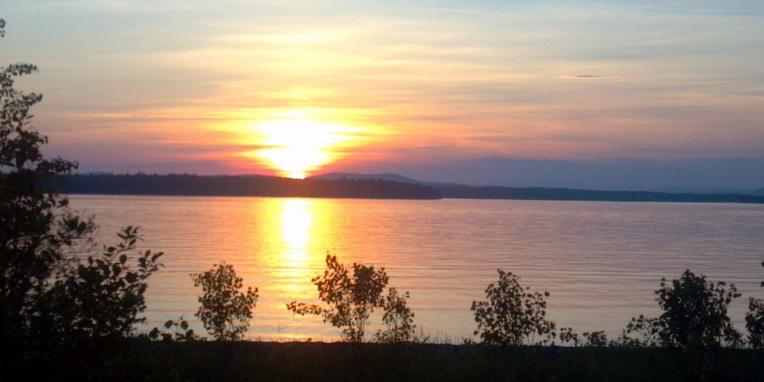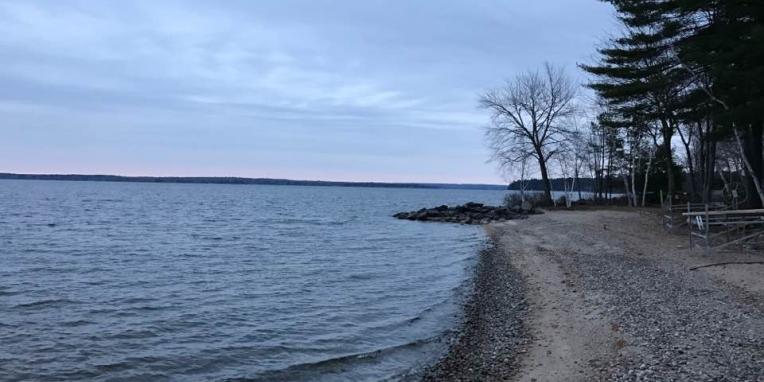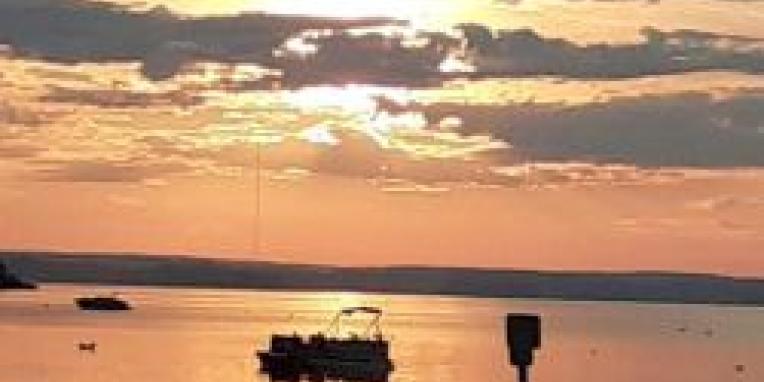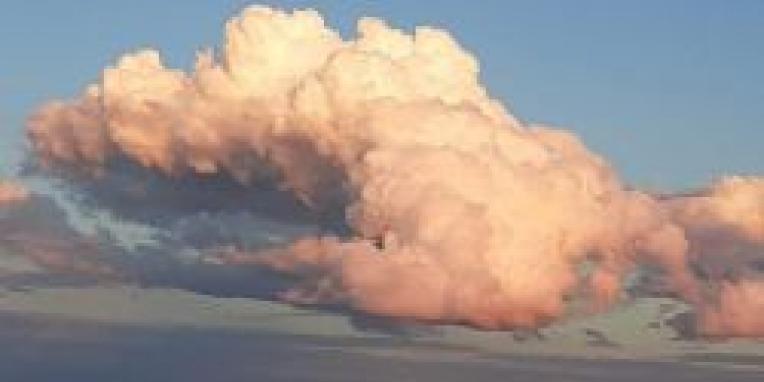Shoreland Ordinance Section 17
Definitons
Accessory Structure or Use – A use or structure which is incidental and subordinate to the principal use or structure. Accessory uses, when aggregated, shall not subordinate the principal use of the lot. A deck or similar extension of the principal structure or a garage attached to the principal structure by a roof or a common wall is considered part of the principal structure.
Aggrieved Party – An owner of land whose property is directly or indirectly affected by the granting or denial of a permit or variance under this Ordinance; a person whose land abuts land for which a permit or variance has been granted; or any other person or group of persons who have suffered particularized injury as a result of the granting or denial of such permit or variance.
Agriculture – The production, keeping or maintenance for sale or lease, of plants and/or animals, including but not limited to: forages and sod crops; grains and seed crops; dairy animals and dairy products; poultry and poultry products; livestock; fruits and vegetables; and ornamental and greenhouse products. Agriculture does not include forest management and timber harvesting activities.
Aquaculture – The growing or propagation of harvestable freshwater, estuarine, or marine plant or animal species.
Basal Area – The area of cross-section of a tree stem at four and one half (4 ½) feet above ground level and inclusive of bark.
Basement – Any portion of a structure with a floor-to-ceiling height of six (6) feet or more and having more than fifty (50%) percent of its volume below the existing ground level.
Boat Launching Facility – A facility designed primarily for the launching and landing of watercraft, and which may include an access ramp, docking area, and parking spaces for vehicles and trailers.
Bureau – State of Maine Department of Conservation’s Bureau of Forestry
Campground – Any area or tract of land to accommodate two (2) or more parties in temporary living quarters, including, but not limited to tents, recreational vehicles or other shelters.
Canopy – The more or less continuous cover formed by tree crowns in a wooded area.
Commercial Use – The use of lands, buildings, or structures, other than a “home occupation”, defined below, the intent and result of which activity is the production of income from the buying and selling of goods and/or services, exclusive of rental of residential buildings and/or dwelling units.
Cross-Sectional Area – The cross-sectional area of a stream or tributary stream channel is determined by multiplying the stream or tributary stream channel width by the average stream or tributary stream channel depth. The stream or tributary stream channel width is the straight line distance from the normal high-water line on one side of the channel to the normal high-water line on the opposite side of the channel. The average stream or tributary stream channel depth is the average of the vertical distances from a straight line between the normal high-water lines of the stream or tributary stream channel to the bottom of the channel.
DBH – The diameter of a standing tree measured 4.5 feet from ground level.
Development – A change in land use involving alteration of the land, water or vegetation, or the addition or alteration of structures or other construction not naturally occurring.
Dimensional Requirements – Numerical standards relating to spatial relationships including but not limited to setback, lot area, shore frontage and height.
Disability – Any disability, infirmity, malformation, disfigurement, congenital defect or mental condition caused by bodily injury, accident, disease, birth defect, environmental conditions or illness; and also includes the physical or mental condition of a person which constitutes a substantial handicap as determined by a physician or in the case of mental handicap, by a psychiatrist or psychologist, as well as any other health or sensory impairment which requires special education, vocational rehabilitation or related services.
Disruption of Shoreline Integrity – The alteration of the physical shape, properties, or condition of a shoreline at any location by timber harvesting and related activities. A shoreline where shoreline integrity has been disrupted is recognized by compacted, scarified and/or rutted soil, and abnormal channel or shoreline cross-section, and in the case of flowing waters, a profile and character altered from natural conditions.
Driveway – A vehicular access-way less than five hundred (500) feet in length serving two single-family dwellings or one two-family dwelling, or less.
Emergency Operations – Operations conducted for the public health, safety or general welfare, such as protection of resources from immediate destruction or loss, law enforcement, and operations to rescue human beings, property and livestock from the threat of destruction or injury.
Essential Services – Gas, electrical or communication facilities; steam, fuel, electric power or water transmission or distribution lines, towers and related equipment; telephone cables or lines, poles and related equipment; gas, oil, water, slurry or other similar pipelines; municipal sewage lines, collection or supply systems; and associated storage tanks. Such systems may include towers, poles, wires, mains, drains, pipes, conduits, cables, fire alarms and police call boxes, traffic signals, hydrants and similar accessories, but shall not include service drops or buildings which are necessary for the furnishing of such services.
Expansion of a Structure – An increase in the floor area or volume of a structure, including all extensions such as, but not limited to: attached decks, garages, porches and greenhouses.
Expansion of Use – The addition of one or more months to a use’s operating season; or the use of more floor area or ground area devoted to a particular use.
Family – One or more persons occupying a premises and living as a single housekeeping unit.
Floodway – The channel of a river or other watercourse and adjacent land areas that must be reserved in order to discharge the one hundred (100) year flood without cumulatively increasing the water surface elevation by more than one (1) foot in height.
Floor Area – The sum of the horizontal areas of the floor(s) of a structure enclosed by exterior walls, plus the horizontal area of any unenclosed portions of a structure such as porches and decks.
Forest Management Activities – Timber cruising and other forest resource evaluation activities, pesticide or fertilizer application, management planning activities, timber stand improvement, pruning, regeneration of forest stands, and other similar or associated activities, exclusive of timber harvesting and the construction, creation or maintenance of roads.
Forested Wetland – A freshwater wetland dominated by woody vegetation that is six (6) meters tall (approximately twenty (20) feet) or taller.
Forest Stand – A contiguous group of trees sufficiently uniform in age class distribution, composition, and structure, and growing on a site of sufficiently uniform quality, to be a distinguishable unit.
Foundation – The supporting substructure of a building or other structure, excluding wooden sills and post supports, but including basements, slabs, frost walls, or other base consisting of concrete, block, brick or similar material.
Freshwater Wetland – Freshwater swamps, marshes, bogs and similar areas, other than forested wetlands, which are:
1. Of ten (10) or more contiguous acres; or of less than ten (10) contiguous
acres and adjacent to a surface water body, excluding any river, stream or
brook, such that in a natural state, the combined surface area is in excess of
ten (10) areas; and
2. Inundated or saturated by surface or ground water at a frequency and for a
duration sufficient to support, and which under normal circumstances do
support, a prevalence of wetland vegetation typically adapted for life in
saturated soils.
Freshwater wetlands may contain small stream channels or inclusions of land that do not conform to the criteria of this definition.
Functionally Water-Dependent Uses – Those uses that require, for their primary purpose, location on submerged lands or that require direct access to, or location in, coastal or inland waters and that cannot be located away from these waters. The uses include, but are not limited to commercial and recreational fishing and boating facilities, excluding recreational boat storage buildings, finfish and shellfish processing, fish storage and retail and wholesale fish marketing facilities, waterfront dock and port facilities, shipyards and boat building facilities, marinas, navigation aids, basins and channels, retaining walls, industrial uses dependent upon water-borne transportation or requiring large volumes of cooling or processing water that cannot reasonably be located or operated at an inland site, and uses which primarily provide general public access to waters.
Great Pond – Any inland body of water which in a natural state has a surface area in excess of ten (10) acres, and any inland body of water artificially formed or increased which has a surface area in excess of thirty (30) acres except for the purposes of this Ordinance, where the artificially formed or increased inland body of water is completely surrounded by land held by a single owner.
Great Pond Classified GPA – Any great pond classified GPA, pursuant to 38 M.R.S.A. Article 4-A Section 465-A. This classification includes some, but not all impoundments of river that are defined as great ponds.
Ground Cover – Small plants, fallen leaves, needles and twigs, and the partially decayed organic matter of the forest floor.
Harvest Area – The area where timber harvesting and related activities, including the cutting of trees, skidding, yarding, and associated road construction take place. The area affected by a harvest encompasses the area within the outer boundaries of these activities, excepting unharvested areas greater than ten (10) acres within the area affected by a harvest.
Height of a Structure – The vertical distance between the mean original (prior to construction) grade at the downhill side of the structure and the highest point of the structure, excluding chimneys, steeples, antennas, and similar appurtenances that have no floor area.
Home Occupation – An occupation or profession which is customarily conducted on or in a residential structure or property and which is:
1. Clearly incidental to and compatible with the residential use of the property
and surrounding residential uses; and
2. Which employs no more than two (2) persons other than family members
residing in the home.
Increase in Non-Conformity of a Structure – Any change in a structure or property which causes further deviation from the dimensional standard(s) creating the non-conformity such as, but not limited to, reduction in water body, tributary stream or wetland setback distance, increase in lot coverage, or increase in height of a structure. Property changes or structure expansions which either meet the dimensional standard or which cause no further increase in the linear extent of non-conformance of the existing structure shall not be considered to increase non-conformity. For example, there is no increase in non-conformity with the setback requirement for water bodies, wetlands, or tributary streams if the expansion extends no further into the required setback area than does any portion of the existing non-conforming structure. Hence, a structure may be expanded laterally provided that the expansion extends no closer to the water body, tributary stream, or wetland than the closest portion of the existing structure from that water body, tributary stream, or wetland. Included in this allowance are expansions which in-fill irregularly shaped structures.
Individual Private Campsite – An area of land which is not associated with a campground, but which is developed for repeated camping by only one group not to exceed ten (10) individuals and which includes site improvements which may include but not be limited to gravel pads, parking areas, fire places, or tent platforms.
Industrial – The assembling, fabrication, finishing, manufacturing, packaging or processing of goods, or the extraction of minerals.
Institutional – A non-profit or quasi-public use, or institution such as a church, library, public or private school, hospital, or municipally owned or operated building, structure or land used for public purposes.
Land Management Road – A route or track consisting of a bed of exposed mineral soil, gravel, or other surfacing materials constructed for, or created by, the passage of motorized vehicles and used primarily for timber harvesting and related activities, including associated log yards, but not including skid trails or skid roads.
Licensed Forester – A forester licensed under 32 M.R.S.A. Chapter 76.
Lot Area – The area of land enclosed within the boundary lines of a lot, minus land below the normal high-water line of a water body or upland edge of a wetland and areas beneath roads serving more than two lots.
Marina – A business establishment having frontage on navigable water and, as its principal use, providing for hire offshore moorings or docking facilities for boats, and which may also provide accessory services such as boat and related sales, boat repair and construction, indoor and outdoor storage of boats and marine equipment, bait and tackle shops and marine fuel service facilities.
Market Value – The estimated price a property will bring in the open market and under prevailing market conditions in a sale between a willing seller and a willing buyer, both conversant with the property and with prevailing general price levels.
Mineral Exploration – Hand sampling, test boring , or other methods of determining the nature or extent of mineral resources which create minimal disturbance to the land and which include reasonable measures to restore the land to its original condition.
Mineral Extraction – Any operation within any twelve (12) month period which removes more than one hundred (100) cubic yards of soil, topsoil, loam, sand, gravel, clay, rock, peat, or other like material from its natural location and to transport the product removed, away from the extraction site.
Minimum Lot Width – The closest distance between the side lot lines of a lot. When only two lot lines extend into the shoreland zone, both lot lines shall be considered to be side lot lines.
Multi-Unit Residential – A residential structure containing three (3) or more residential dwelling units.
Native – Indigenous to the local forests.
Non-Conforming Condition – Non-conforming lot, structure or use which is allowed solely because it was in lawful existence at the time this Ordinance or subsequent amendment took effect.
Non-Conforming Lot – A single lot of record which, at the effective date of adoption or amendment of this Ordinance, does not meet the area, frontage, or width requirements of the district in which it is located.
Non-Conforming Structure – A structure which does not meet any one or more of the following dimensional requirements; setback, height, or lot coverage, but which is allowed solely because it was in lawful existence at the time of this Ordinance or subsequent amendments took effect.
Non-Conforming Use – Use of buildings, structures, premises, land or parts thereof which is not allowed in the district in which it is situated, but which is allowed to remain solely because it was in lawful existence at the time this Ordinance or subsequent amendments took effect.
Normal High-Water Line (non-tidal waters) – That line which is apparent from visible markings, changes in the character of soils due to prolonged action of the water or changes in vegetation, and which distinguishes between predominantly aquatic and predominantly terrestrial land. Areas contiguous with rivers and great ponds that support non-forested wetland vegetation and hydric soils and that are at the same or lower elevation as the water level of the river or great pond during the period of normal high-water are considered part of the river or great pond.
NOTE: As of December 6, 2004 through various studies, the Department of Environmental Protection evaluated the Normal High-Water Level (NHWL) of Sebago Lake to be 266.5’ (feet) (above mean sea level).
Person – An individual, corporation, governmental agency, municipality, trust, estate, partnership, association, two or more individuals having a joint or common interest, or other legal entity.
Piers, Docks, Wharfs, Bridges and Other Structures and Uses Extending Over or Beyond the Normal High-Water Line or Within a Wetland –
1. Temporary: Structures which remain in or over the water for less than seven
(7) months in any period of twelve (12) consecutive months.
2. Permanent: Structures which remain on or over the water for seven (7)
months or more in any period of twelve (12) consecutive
months.
Principal Structure – A building other than one which is used for purposes wholly incidental or accessory to the use of another building or use on the same premises.
Principal Use – A use other than one which is wholly incidental or accessory to another use on the same premises.
Public Facility – Any facility including, but not limited to buildings, property, recreation areas, and roads, which are owned, leased, or otherwise operated, or funded by a governmental body or public entity.
Recent Flood-Plain Soils – The following soil series as described and identified by the National Cooperative Soil Survey:
Fryeburg Hadley Limerick
Lovewell Medomak Ondawa
Alluvial Cornish Charles
Podunk Rumney Saco
Suncook Sunday Winooski
Recreational Facility – A place designed and equipped for the conduct of sports, leisure time activities, and other customary and usual recreational activities, excluding boat launching facilities.
Recreational Vehicle – A vehicle or an attachment to a vehicle designed to be towed, and designed for temporary sleeping or living quarters for one or more persons, and which may include a pick-up camper, travel trailer, tent trailer, camp trailer, and motor home. In order to be considered as a vehicle and not as a structure, the unit must remain with its tires on the ground, and must be registered with the State Division of Motor Vehicles
Replacement System – a system intended to replace:
1. an existing system which is either malfunctioning or being upgraded with
no significant change of design flow or use of the structure, or
2. any existing overboard wastewater discharge.
Residential Dwelling Unit – A room or group of rooms designed and equipped exclusively for use as permanent, seasonal, or temporary living quarters for only one family at a time, and containing cooking, sleeping and toilet facilities. The term shall include mobile homes and rental units that contain cooking, sleeping, and toilet facilities regardless of the time-period rented. Recreational vehicles are not residential dwelling units.
Residual Basal Area – The average of the basal area of trees remaining on a harvested site.
Residual Stand – A stand of trees remaining in the forest following timber harvesting and related activities.
Riprap – Rocks, irregularly shaped, and at least six (6) inches on diameter, used for erosion control and soil stabilization, typically used on ground slopes of two (2) units horizontal to one (1) unit vertical or less.
River – A free-flowing body of water including its associated flood-plain wetlands from that point at which it provides drainage for a watershed of twenty-five (25) square miles to its mouth.
Road – A route or track consisting of a bed of exposed mineral soil, gravel, asphalt, or other surfacing material constructed for or created by the repeated passage of motorized vehicles, excluding a driveway as defined.
Service Drop – Any utility line extension which does not cross or run beneath any portion of a water body provided that:
1. in the case of electric service
a. the placement of wires and/or the installation of utility poles is
located entirely upon the premises of the customer requesting
service or upon a roadway right-of-way; and
b. the total length of the extension is less than one thousand (1,000)
feet.
2. in the case of telephone service
a. the extension, regardless of length, will be made by the installation
of telephone wires to existing utility poles, or
b. the extension requiring the installation of new utility poles or
placement underground is less than one thousand (1,000) feet in
length.
Setback – The nearest horizontal distance from the normal high-water line of a water body or tributary stream, or upland edge of a wetland, to the nearest part of a structure, road, parking space or other regulated object or area.
Shore Frontage – The length of a lot bordering on a water body or wetland measured in a straight line between the intersections of the lot lines with the shoreline.
Shoreland Zone – The land area located within two hundred and fifty (250) feet, horizontal distance, of the normal high-water line of any great pond or river; within two hundred and fifty (250) feet, horizontal distance, of the upland edge of a coastal wetland, including all areas affected by tidal action; within two hundred and fifty (250) feet of the upland edge of a freshwater wetland; or within seventy-five (75) feet, horizontal distance, of the normal high-water line of a stream.
Shoreline – The normal high-water line, or upland edge of a freshwater or coastal wetland.
Significant River Segments – See 38 M.R.S.A. section 437
Skid Road or skid Trail – A route repeatedly used by forwarding machinery or animal to haul or drag forest products from the stump to the yard or landing, the construction of which requires minimal excavation.
Slash – The residue, e.g., treetops and branches, left on the ground after a timber harvest.
Stream – A free-flowing body of water from the outlet of a great pond or the confluence of two (2) perennial streams as depicted on the most recent edition of a United States Geological Survey 7.5 minute series topographic map, or if not available, a 15-minute series topographic map, to the point where the body of water becomes a river or flows to another water body or wetland within the shoreland area.
Structure – Anything built for the support, shelter or enclosure of persons, animals, goods or property of any kind, together with anything constructed or erected with a fixed location on or in the ground, exclusive of fences, and poles, wiring and other aerial equipment normally associated with service drops as well as guying and guy anchors. The term includes structures temporarily or permanently located, such as decks, patios, and satellite dishes.
Substantial Start – Completion of thirty (30) percent of a permitted structure or use measured as a percentage of estimated total cost.
Subsurface Sewage Disposal System – Any system designed to dispose of waste or wastewater on or beneath the surface of the earth; includes, but is not limited to: septic tanks; disposal fields; grandfathered cesspools; holding tanks; pretreatment filter, piping, or any other fixture, mechanism, or apparatus used for those purposes; does not include any discharge system licensed under 38 M.R.S.A. section 414, any surface water waste disposal system, or any municipal or quasi-municipal sewer or wastewater treatment system.
Sustained Slope – A change in elevation where the referenced percent grade is substantially maintained or exceeded throughout the measured area.
Timber Harvesting – The cutting and removal of timber for the primary purpose of selling or processing forest products. The cutting or removal of trees in the shoreland zone on a lot that has less than two (2) acres within the shoreland zone shall not be considered timber harvesting. Such cutting or removal of trees shall be regulated pursuant to Section 15 (P), Clearing or Removal of Vegetation for Activities Other Than Timber Harvesting.
Timber harvesting and related activities – timber harvesting, the construction and maintenance of roads used primarily for timber harvesting and other activities conducted to facilitate timber harvesting.
Tributary Stream – Means a channel between defined banks created by the action of surface water, which is characterized by the lack of terrestrial vegetation or by the presence of a bed, devoid of topsoil, containing waterborne deposits or exposed soil, parent material or bedrock; and which is connected hydrologically with other water bodies. “Tributary stream” does not include rills or gullies forming because of accelerated erosion in disturbed soils where the natural vegetation cover has been removed by human activity.
This definition does not include the term “stream” as defined elsewhere in this Ordinance, and only applies to that portion of the tributary stream located within the shoreland zone of the receiving water body or wetland.
NOTE: Water setback requirements apply to tributary streams within the shoreland
zone.
Upland Edge of a Wetland – The boundary between upland and wetland. For purposes of a freshwater wetland, the upland edge is formed where the soils are not saturated for a duration sufficient to support wetland vegetation; or where the soils support the growth of wetland vegetation, but such vegetation is dominated by woody stems that are six (6) meters (approximately twenty (20) foot) tall or taller.
Vegetation – All live trees, shrubs, and other plants including without limitation, trees both over and under four (4) inches in diameter, measured at four and one half (4½) feet above ground level.
Velocity Zone – An area of special flood hazard extending from offshore to the inland limit of the primary frontal dune along an open coast and any other area subject to high velocity wave action from storms or seismic sources.
Volume of a Structure – The volume of all portions of a structure enclosed by roof and fixed exterior walls as measured from the exterior faces of these walls and roof.
Water Body – Any great pond, river, or stream
Water Crossing – Any project extending from one bank to the opposite bank of a river, stream, tributary stream, or wetland whether under, through, or over the water or wetland. Such projects include but may not be limited to roads, fords, bridges, culverts, water lines, sewer lines, and cables as well as maintenance work on these crossings. This definition includes crossings for timber harvesting equipment and related activities.
Wetland – A freshwater or coastal wetland.
Windfirm – The ability of a forest stand to withstand strong winds and resist windthrow, wind rocking, and major breakage.
Woody Vegetation – Live trees or woody, non-herbaceous shrubs.






